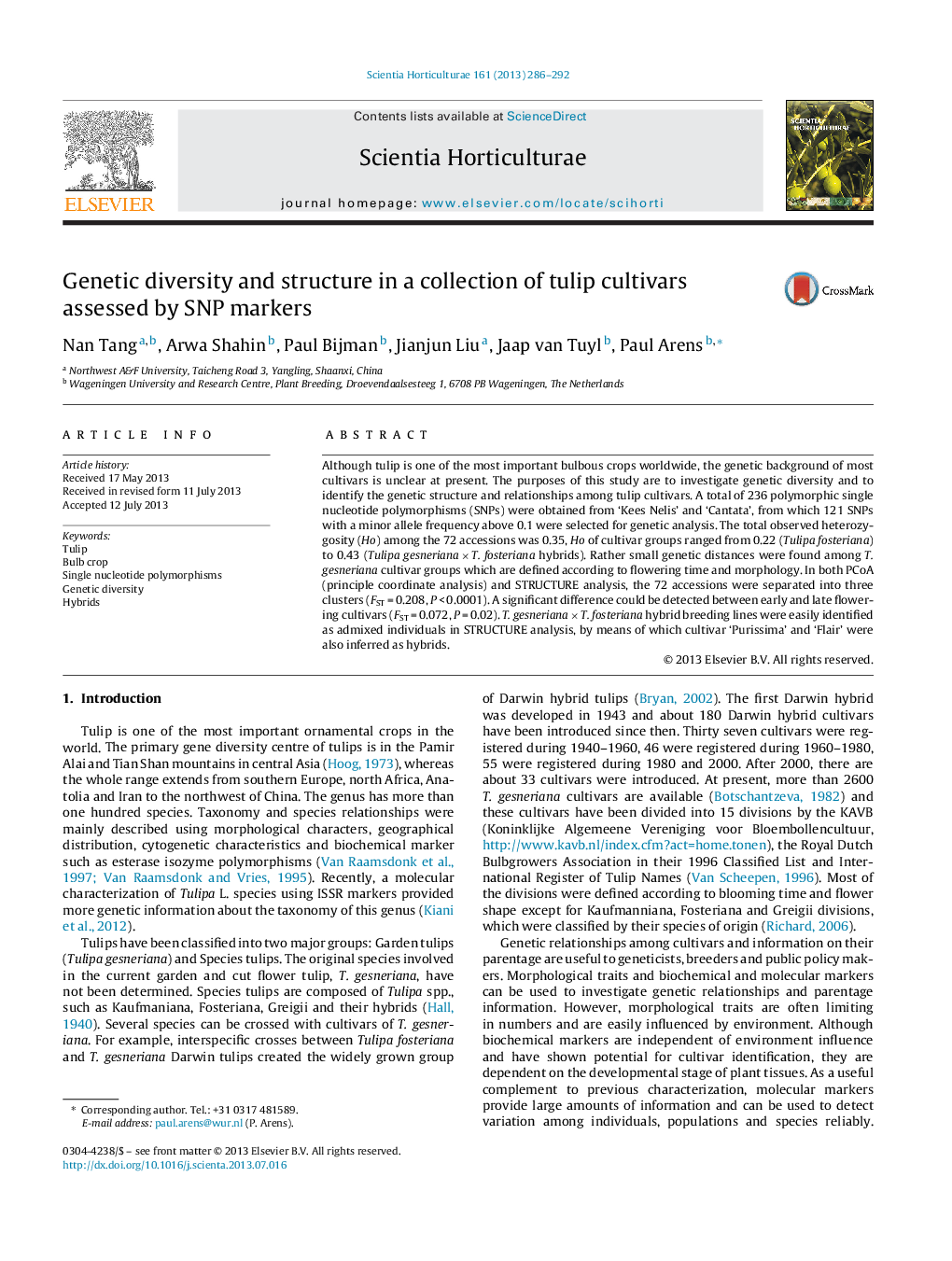| کد مقاله | کد نشریه | سال انتشار | مقاله انگلیسی | نسخه تمام متن |
|---|---|---|---|---|
| 4567172 | 1628837 | 2013 | 7 صفحه PDF | دانلود رایگان |

• Genetic diversity of 72 tulip accessions was evaluated by 121 high quality SNP markers.
• Genetic structure analysis showed clear separation of the two genomes involved (T. gesneriana and T. fosteriana).
• Hybrid breeding lines were easily identified as admixed individuals and cultivar ‘Purissima’ as well as ‘Flair’ were inferred as GF hybrids.
• Genetic differentiation among T. gesneriana cultivars was quite low, only some separation is appearing among cultivar groups due to flowering time.
Although tulip is one of the most important bulbous crops worldwide, the genetic background of most cultivars is unclear at present. The purposes of this study are to investigate genetic diversity and to identify the genetic structure and relationships among tulip cultivars. A total of 236 polymorphic single nucleotide polymorphisms (SNPs) were obtained from ‘Kees Nelis’ and ‘Cantata’, from which 121 SNPs with a minor allele frequency above 0.1 were selected for genetic analysis. The total observed heterozygosity (Ho) among the 72 accessions was 0.35, Ho of cultivar groups ranged from 0.22 (Tulipa fosteriana) to 0.43 (Tulipa gesneriana × T. fosteriana hybrids). Rather small genetic distances were found among T. gesneriana cultivar groups which are defined according to flowering time and morphology. In both PCoA (principle coordinate analysis) and STRUCTURE analysis, the 72 accessions were separated into three clusters (FST = 0.208, P < 0.0001). A significant difference could be detected between early and late flowering cultivars (FST = 0.072, P = 0.02). T. gesneriana × T. fosteriana hybrid breeding lines were easily identified as admixed individuals in STRUCTURE analysis, by means of which cultivar ‘Purissima’ and ‘Flair’ were also inferred as hybrids.
Journal: Scientia Horticulturae - Volume 161, 24 September 2013, Pages 286–292